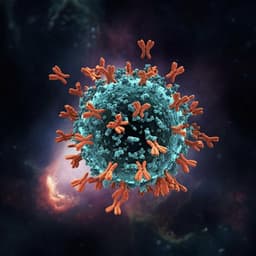
Veterinary Science
A computationally designed antigen eliciting broad humoral responses against SARS-CoV-2 and related sarbecoviruses
S. Vishwanath, G. W. Carnell, et al.
This groundbreaking research reveals a single antigen designed from the receptor-binding domain of the spike protein that induces broad humoral responses against multiple coronavirus strains, including SARS-CoV-1 and SARS-CoV-2. Conducted by a team of experts including Sneha Vishwanath and George William Carnell, this study highlights the potential of innovative vaccines to tackle zoonotic threats, especially in light of the Delta variant.
~3 min • Beginner • English
Related Publications
Explore these studies to deepen your understanding of the subject.







